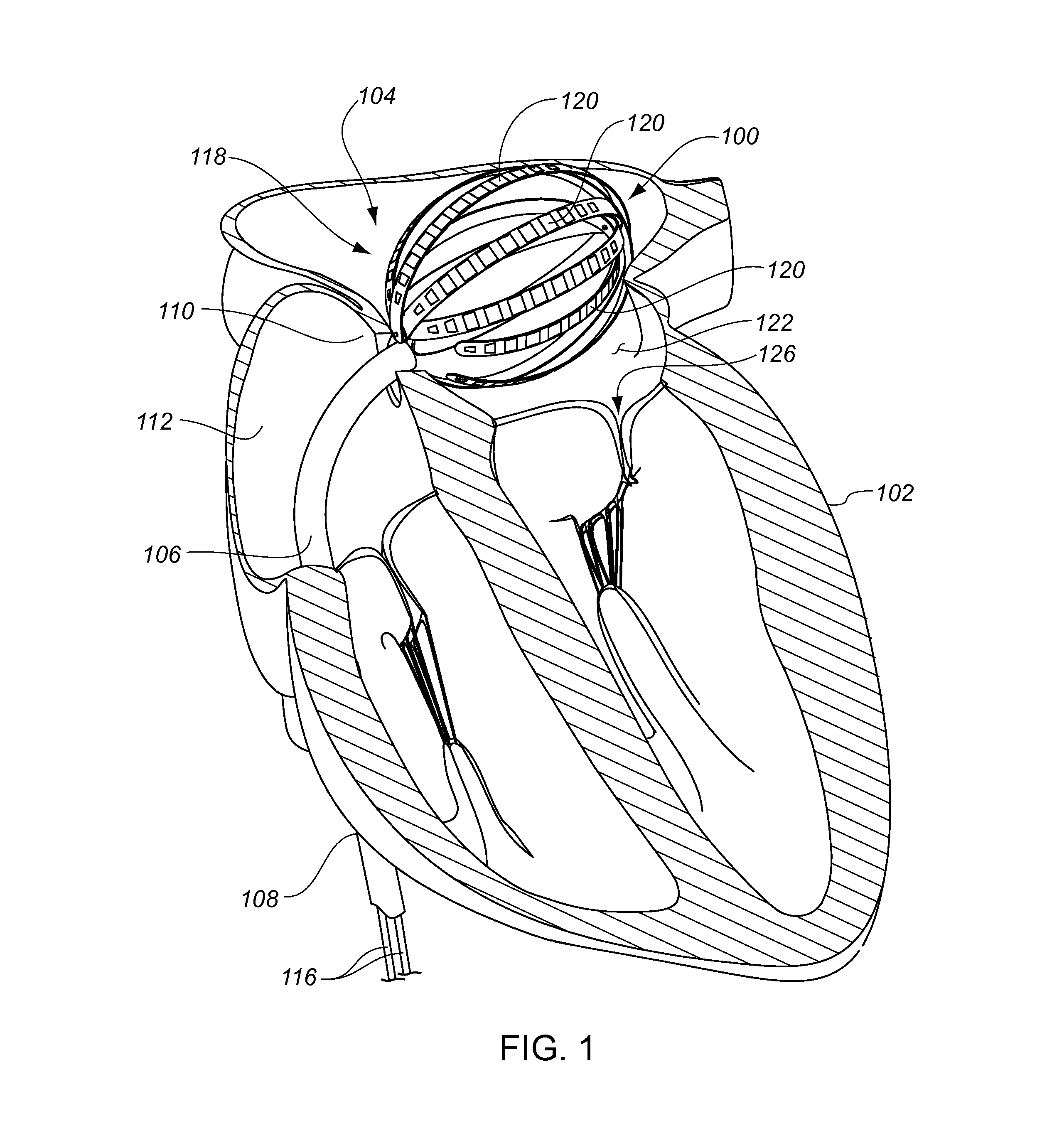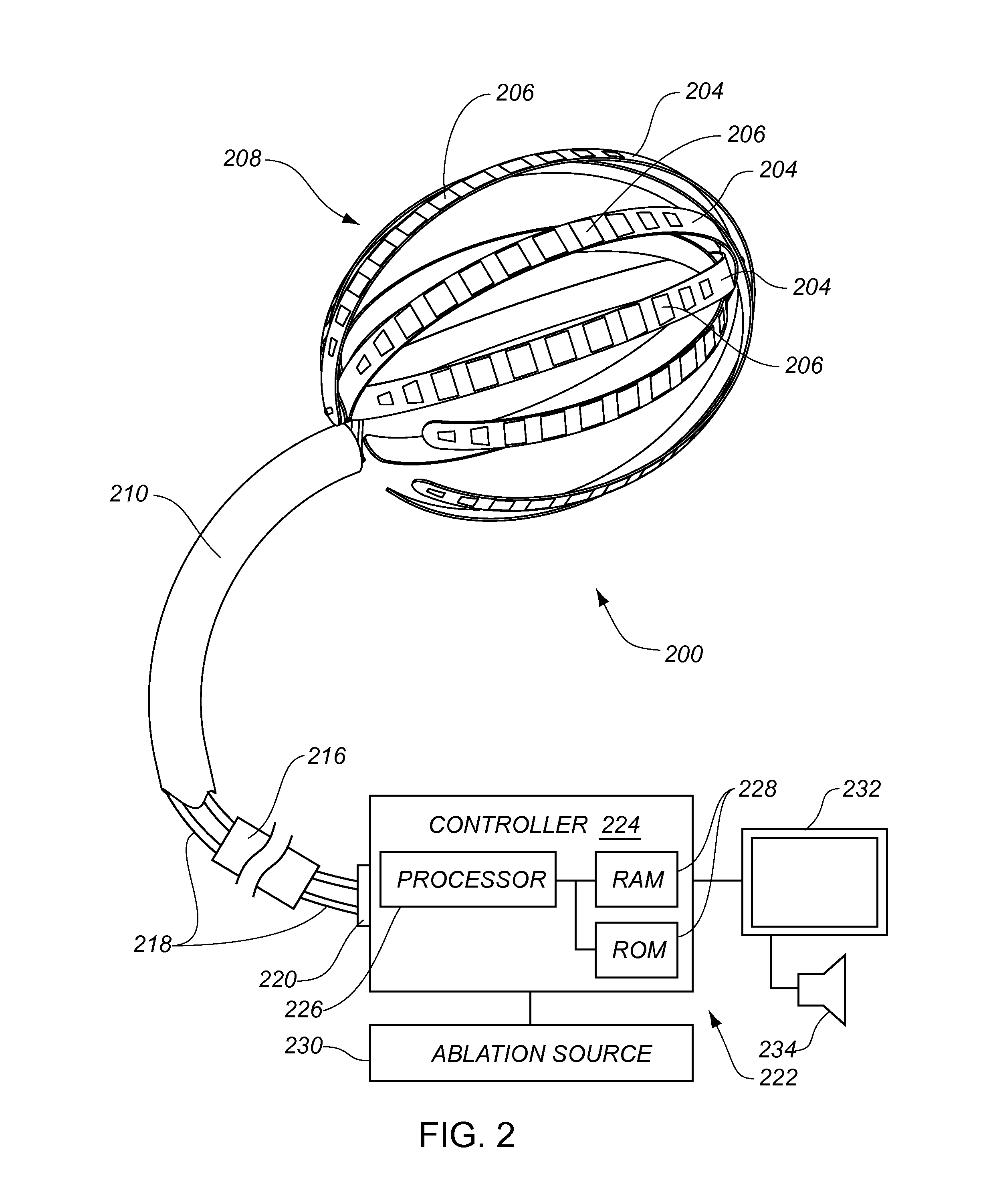Intra-cardiac mapping and ablating
a technology of intracardiac mapping and ablation, applied in the field of surgery, can solve the problems of increasing the complexity of the device structure, affecting the accuracy of ablation, and doctors not having direct visual contact with the medical device, so as to improve the positioning and performance of ablation, improve the ability of deployment, and improve the effect of positioning and performan
- Summary
- Abstract
- Description
- Claims
- Application Information
AI Technical Summary
Benefits of technology
Problems solved by technology
Method used
Image
Examples
example 1
[0132]FIGS. 10A, 10B and 10C show graphs or plots of power series magnitude (in volts) versus time for a first one of the resistive members (denominated as elongate member #1, resistive member #4) in response to a variety of input voltage signals with the following pairs of signal characteristics: 8 V, 0.5 Hz; 8 V, 1 Hz; and 8V, 2.5 Hz as shown in FIG. 10A; 4 V, 0.5 Hz; 4V, 1 Hz; and 4 V, 2.5 Hz as shown in FIG. 10B; and 2 V, 0.5 Hz; 2 V, 1 Hz; and 2 V, 2.5 Hz as shown in FIG. 10C. FIGS. 10D, 10E and 10F respectively show graphs or plots of power series phase (in radians) versus time for the first one of the resistive members (denominated as elongate member #1, resistive member #4) in response to a variety of input voltage signals with the following pairs of signal characteristics: 8V, 0.5 Hz; 8 V, 1 Hz; and 8V, 2.5 Hz as shown in FIG. 10D; 4 V, 0.5 Hz; 4 V, 1 Hz; and 4 V, 2.5 Hz as shown in FIG. 10E; and 2V, 0.5 Hz; 2 V, 1 Hz; and 2 V, 2.5 Hz as shown in FIG. 10F. The results for t...
example 2
[0133]FIGS. 11A, 11B and 11C respectively show graphs or plots of power series magnitude (in volts) versus time for a second one of the resistive members (denominated as elongate member #2, resistive member #3) in response to a variety of input voltage signals with the following pairs of signal characteristic: 8 V, 0.5 Hz; 8 V, 1 Hz; and 8 V, 2.5 Hz as shown in FIG. 11A; 4 V, 0.5 Hz; 4 V, 1 Hz; and 4 V, 2.5 Hz as shown in FIG. 11B; and 2 V, 0.5 Hz; 2 V, 1 Hz; and 2 V, 2.5 Hz as shown in FIG. 11C. FIGS. 11D, 11E and 11F respectively show graphs or plots of power series phase (in radians) versus time for the second one of the resistive members (denominated as elongate member #2, resistive member #3) in response to a variety of the input voltage signals with the following pairs of signal characteristic: 8 V, 0.5 Hz; 8 V, 1 Hz; and 8 V, 2.5 Hz as shown in FIG. 11D; 4 V, 0.5 Hz; 4 V, 1 Hz, and 4 V, 2.5 Hz as shown in FIG. 11E; and 2 V, 0.5 Hz; 2 V, 1 Hz; and 2V, 2.5 Hz as shown in FIG. 1...
PUM
 Login to View More
Login to View More Abstract
Description
Claims
Application Information
 Login to View More
Login to View More - R&D
- Intellectual Property
- Life Sciences
- Materials
- Tech Scout
- Unparalleled Data Quality
- Higher Quality Content
- 60% Fewer Hallucinations
Browse by: Latest US Patents, China's latest patents, Technical Efficacy Thesaurus, Application Domain, Technology Topic, Popular Technical Reports.
© 2025 PatSnap. All rights reserved.Legal|Privacy policy|Modern Slavery Act Transparency Statement|Sitemap|About US| Contact US: help@patsnap.com



